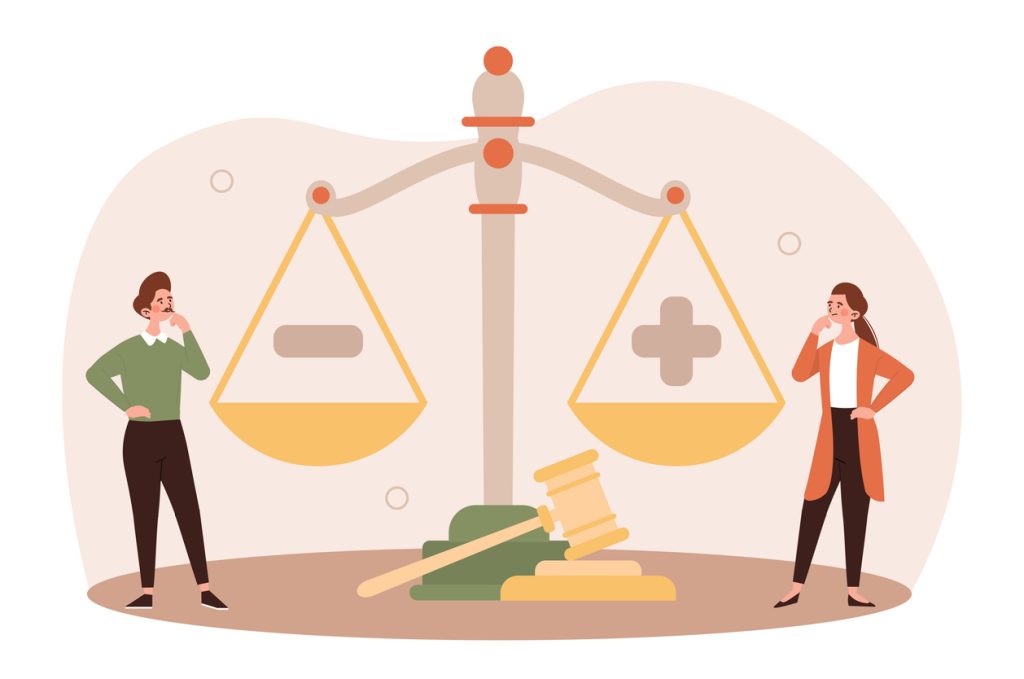Understand Your Rights. Solve Your Legal Problems


This doctrine, which distributes fault among all parties involved, can significantly influence the outcome of a car accident claim, making it a crucial concept for anyone embroiled in such disputes to understand.
That said, this guide aims to discuss the intricacies of comparative fault within the context of car accident claims. It will provide a thorough exploration of its definition, the different types of fault systems, and the impact of different comparative fault systems on your car accident claim.
Comparative fault is a legal doctrine used in tort law to allocate responsibility and damages among parties involved in an accident based on the degree to which each party is at fault. Instead of a binary determination where one party is at fault, and the other is not, comparative fault recognizes that multiple parties may share responsibility for an accident.
In navigating the complexities of this doctrine, individuals find themselves looking for a trusted partner in car accident claims to ensure that their rights are protected and that they navigate the legal system effectively. This nuanced approach allows for a more equitable distribution of damages, reflecting the shared nature of fault in many accidents.
Comparative fault systems are integral to determining liability and compensation in personal injury and car accident cases. These systems aim to allocate damages more equitably, reflecting each party's contribution to the incident.
Under the pure comparative fault system, a plaintiff can recover damages even if they are found to be up to 99% at fault for the accident. Their percentage of fault will reduce their compensation. For example, a plaintiff awarded $100,000 in damages but found to be 40% at fault will receive only 60% of the award, which equals $60,000. This system is the most lenient in terms of allowing plaintiffs to recover damages, regardless of how high their fault percentage might be.
The modified comparative fault system is split into two main types, often referred to by their fault threshold:
Comparative fault plays a pivotal role in shaping the outcome of your car accident claim, influencing both the potential compensation you might receive and the strategy for pursuing your case. Here's a breakdown of how comparative fault can affect your claim:
The most direct impact of comparative fault on your claim is the adjustment of compensation based on your degree of fault. If you are found partially at fault for the accident, any compensation given to you will be reduced by your percentage of fault.
For instance, if you're deemed 20% responsible for the incident and the total damages amount to USD$100,000, you would only be eligible to receive USD$80,000. This proportional reduction ensures that compensation reflects each party's contribution to the accident.
The comparative fault also affects negotiations with insurance companies. Insurers may use the principle of comparative fault to justify offering lower settlements, arguing that your share of fault reduces their client's liability. Understanding how comparative fault works enables you to negotiate more effectively, ensuring that settlement offers fairly reflect the extent of your responsibility for the accident.
The system of comparative fault in your jurisdiction can influence the legal strategy for your case. In jurisdictions with a pure comparative fault system, pursuing compensation might be worthwhile even if you bear a significant portion of the fault.
However, in places with a modified comparative fault system, especially with a 50% or 51% bar rule, the strategy might differ since recovering damages is not possible if your level of fault reaches or exceeds the specified threshold.
Cases involving comparative fault often require a detailed examination of the events leading up to the accident, making them more complex. Proving the degree of fault attributed to each party can involve extensive evidence gathering, witness testimonies, and sometimes accident reconstruction experts. This complexity can affect the duration of your case and the resources required to pursue it.
Comparative fault can encourage parties to settle out of court. Given the uncertainties and potential for reduced compensation when a case goes to trial, parties may find it more advantageous to negotiate a settlement. Understanding how your degree of fault affects potential compensation can guide you in evaluating settlement offers and deciding whether to accept or continue negotiating.
As individuals delve into the complexities of car accident claims and the intricacies of comparative fault, it’s crucial to recognize that with a solid understanding of relevant laws and a strategic approach to claims, the scales of justice can be balanced. The journey toward obtaining rightful compensation, while laden with challenges, is navigable with the correct knowledge and resources, offering a beacon of hope for achieving the deserved resolution.






